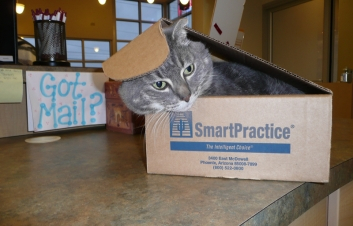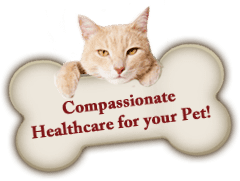
Often times it’s easy to forget that oral care is as important for your pet as it is for you. Without proper dental care, nearly 80% of dogs and 70% of cats show signs of oral disease by the age of 3. What’s more, nearly 85% of all adult pets currently suffer from periodontal disease, a condition which leads to bad breath, pain, infection, tooth decay, eventual loss of teeth, kidney and liver disease, and, as a result, ultimately decreases your pet’s overall life expectancy.
Some warning signs of periodontal disease may include but are not limited to:
- Bad breath
- Red or swollen gums
- A yellow or brown crust around the gum-line
- Pain or bleeding when the gums are touched
- Difficulty chewing
- Changes in eating habits
- Possibly even depression.
It is incredibly important to remember that periodontal disease is the most common disease in both dogs and cats, and is even more prevalent in small breed dogs and pure breed cats.
Fortunately, periodontal disease is completely preventable! Oral exams should be performed by your veterinarian at the time of your pet’s annual wellness exam. These oral exams enable our veterinarians to monitor the overall health of your pet’s teeth and gums, and to determine whether a dental cleaning is recommended or required for your pet.
All of our professional dental cleanings are performed while the patient is safely under anesthesia. The dental cleanings are scheduled Monday through Friday and are performed by our extremely caring and experienced Licensed Veterinary Technicians, together with our veterinarians. Dental cleanings for animals are similar to those for humans including polishing, probing, charting, scaling, dental radiographs, and fluoride treatments.
Please feel free to call us with any questions or concerns you may have regarding your pet’s oral health. Together we can help your pet live a longer, happier, and healthier life!
Remember: Schedule your pet’s professional dental cleaning during the month of January or February and you’ll receive a 15% discount (discount only applied to the professional dental cleaning and the dental anesthesia).
Veterinary Dental Care FAQ’s
When should my pet have a dental cleaning?
When visible tartar is present on the teeth, or your pet’s gums are red or bleeding during chewing, a dental appointment should be scheduled. Brushing the teeth when tartar and dental disease is already present will not help and, in fact, is often painful. Studies now show that dental cleanings should be performed starting at 1-2 years of age – before tartar is present! With routine oral assessments and cleanings, the life expectancy of your pet can be increased by about 2 years!
My pet still eats well even though the teeth look bad – is he/she in pain?
Animals have a very strong natural instinct to hide pain. By the time they stop eating, the pain is more severe than the will to survive and eat. Normal eating is not a reliable indicator of pain.
Why does my pet have dental disease?
We brush our teeth at least twice daily and we still have to see our dentist regularly to have our teeth professionally cleaned. Pets acquire dental disease over time the same as we do, particularly if their teeth are not regularly brushed. In addition, some breeds of dogs are particularly prone to developing dental disease.
Is my pet “too old” for a dental procedure?
Age is not a disease, and pets are never too old to have their pain and infection treated. Our anesthetic protocol is designed to be as safe as possible for our geriatric patients. Many clients state a major change in their pet’s behavior after their dental disease is treated and they are no longer in discomfort.
What does a dental procedure involve?
When your pet arrives at the clinic in the morning, he or she will first have a physical exam and blood work if the veterinarian has indicated that this is necessary. Some sedation will be given, an intravenous catheter will be placed, and your pet will be placed under anesthesia. Your pet’s heart rate, respiratory rate, temperature, and blood pressure will all be monitored closely by an experienced veterinary technician throughout the procedure. Your pet will be on IV fluids throughout the procedure in order to help maintain his or her blood pressure.
The first step in a dental procedure is examining all of the teeth thoroughly and evaluating each tooth for health. All of the teeth will be cleaned and polished. Dental x-rays may also be taken. These are often necessary to evaluate the tooth below the gum line as well as the enamel of the teeth. Every effort is made to save your pet’s teeth, however if a tooth is unhealthy and cannot be saved, it will be surgically extracted.
Our practice has invested in dental x-ray equipment, high speed dental equipment, and anesthetic monitoring equipment to ensure that your pet gets the best possible dental care.
How will my pet eat if several teeth are extracted?
Trust us when we say – having no teeth is better than having bad teeth! In many cases, once the diseased teeth are removed the pet actually eats better because the pain and infection are gone.
How do I prevent dental disease in my pet?
Brushing the teeth EVERY DAY and having dental cleanings done by your veterinarian when minimal tartar is present will prevent major oral surgery. Using dental diets, chews, sprays, etc. are better than nothing, but they do not help as much as brushing. Feeding hard food or treats does not prevent dental disease.






